Bill, aka “Calypso_Poet” (on the legacy Ukuworld Forums) asked a very interesting question that I hadn’t come across before. He has an ‘acoustic’ ukulele and wanted to know how to electrify your ukulele. That means how to connect a ukulele with a pickup or in other words, how do you add some kind of pickup to your ukulele so that you can amplify it.
Pickup in Wikipedia’s words
A pickup device is a transducer that captures or senses mechanical vibrations produced by musical instruments. It then converts them to an electrical signal that is amplified using an instrument amplifier. The result? It produces musical sounds through a loudspeaker in a speaker enclosure.
I couldn’t have put it better myself. Pickups have been around since the 1950s. They enable us to amplify the sound coming from our ukulele. The same vibrations that are sent into your ukulele’s body to create that lovely ukulele sound can also be picked up by a pickup. That means you can amplify them and transmit them through a speaker. Using a ukulele with a pickup allows you to play for larger crowds. It also makes it possible to add cool amplification effects.
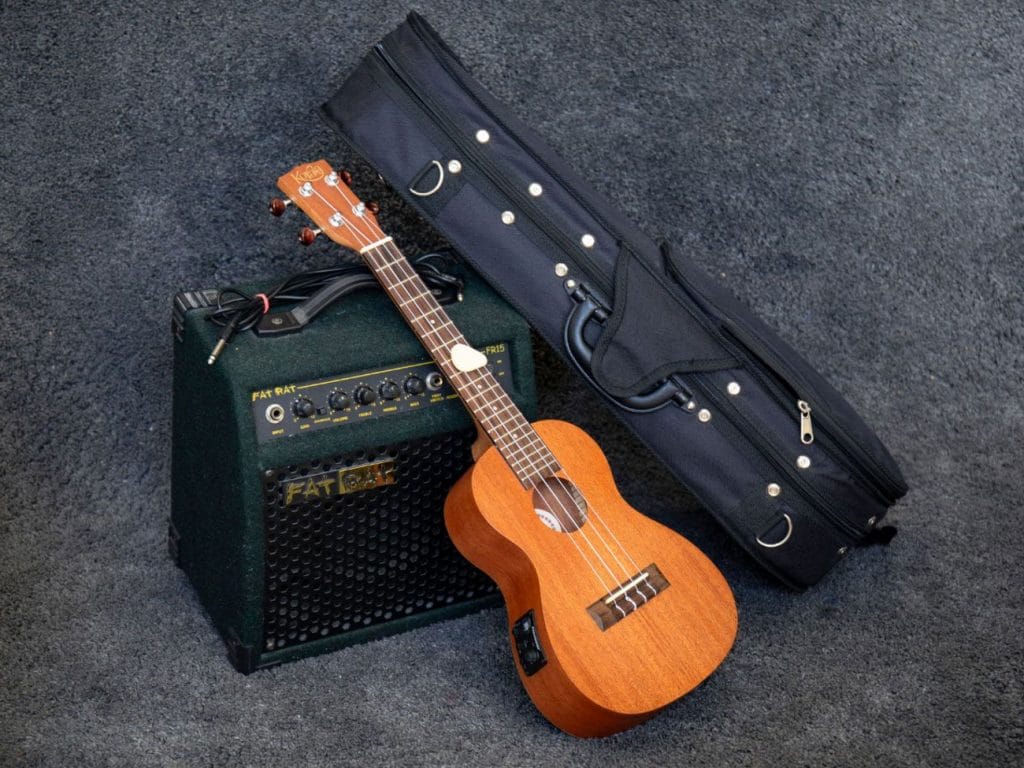
A lot of different pickups have emerged recently, specifically for ukuleles. This can be quite confusing if it’s the first time you’ve looked at pickups. To keep things simple, you can divide them into two main groups: active and passive pickups.
Ukulele with passive piezo pickups
On guitars, passive or piezo pickups are the ‘original’ magnetic pickups. Without going into too much detail, they consist of many coils of copper wire around a permanent magnet, usually made of Alnico or Ceramic. The location of the magnet in proximity to the strings magnetises the strings so that they become magnetic as well.
When the strings vibrate, they disturb the magnetic field, causing an electrical current to pass through the copper wire which is representative of that specific vibration. This current can be amplified and converted into sound. The vast majority of guitar pickups are passive ones.
Ukulele passive pickups are constructed somewhat differently, but the principle is the same. Because of their construction, these pickups send the ‘raw’ signal coming from your ukulele strings to your amplifier or speaker (with a pre-amp). They give a fuller and more natural sound. They are also much lighter than active pickups (read on to find out why).
The problem with passive pickups is that the coils of wire involved can transmit a lot of hum and background interference. Passive pickups are also pretty sensitive to feedback when pushed hard. Another disadvantage is that they do need an external preamp. This means that you can’t directly plug your ukulele into a speaker. Any acoustic (guitar) amplifier will work just fine, though.
Greater dynamic range
Passive pickups, despite their drawbacks, have a greater dynamic range. If you’re the kind of player that likes to be able to move from whisper quiet to a screaming wail, a passive set-up is likely to suit your playing style best. What is more, these types tend to lose high frequency detail and enhance lower frequencies, giving them a warmer tone.
The Kremona (KNA) UK-1 ($69) is a passive ukulele pickup that is not all that difficult to install. It is quite popular, looks nice with its wooden casing, is easy to use, not intrusive for your ukulele at all and fits most ukuleles. The best way to install this is the moment that you’re changing your strings.
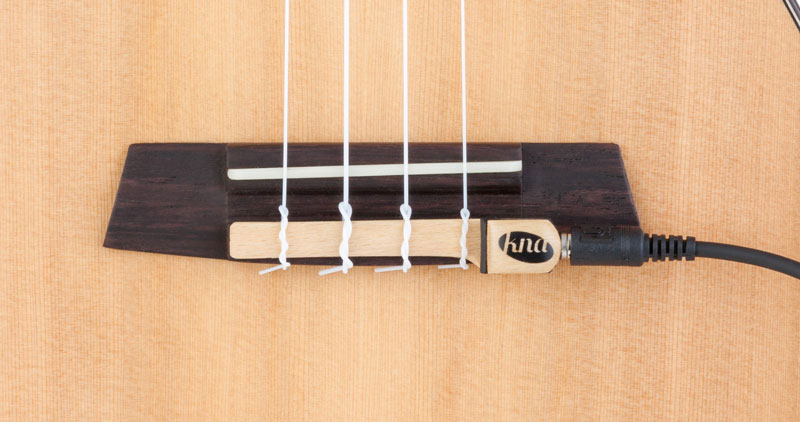
If you want to kick it up at notch and aren’t afraid of drilling a (small) hole in your ukulele, the K&K Sound Aloha Twin double piezo pickup setup ($79) is perfect for you. K&K is a very popular manufacturer out there producing passive pickups not only for ukulele, but also for guitars, mandolin and banjo. While these are more intrusive to install at first, they offer almost no visible difference after installation. There’s also no hassle with reinstalling during every restring as is the case with the UK-1 by Kremona. Due to their “in-body” dual setup they do sound more natural.
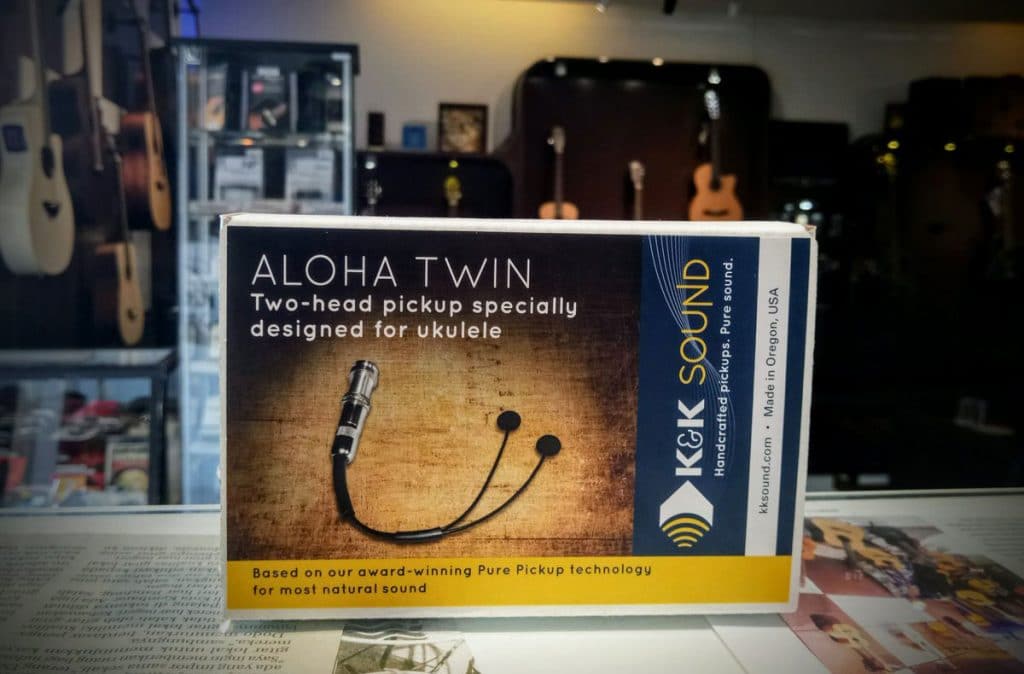
Ukulele with active pickups
Active pickups use far fewer coils, because their circuitry includes an active preamp usually powered by a 9V (or typical CR2032 3V) battery. This means the signal is amplified immediately on or in the ukulele, even before it reaches a speaker unit.
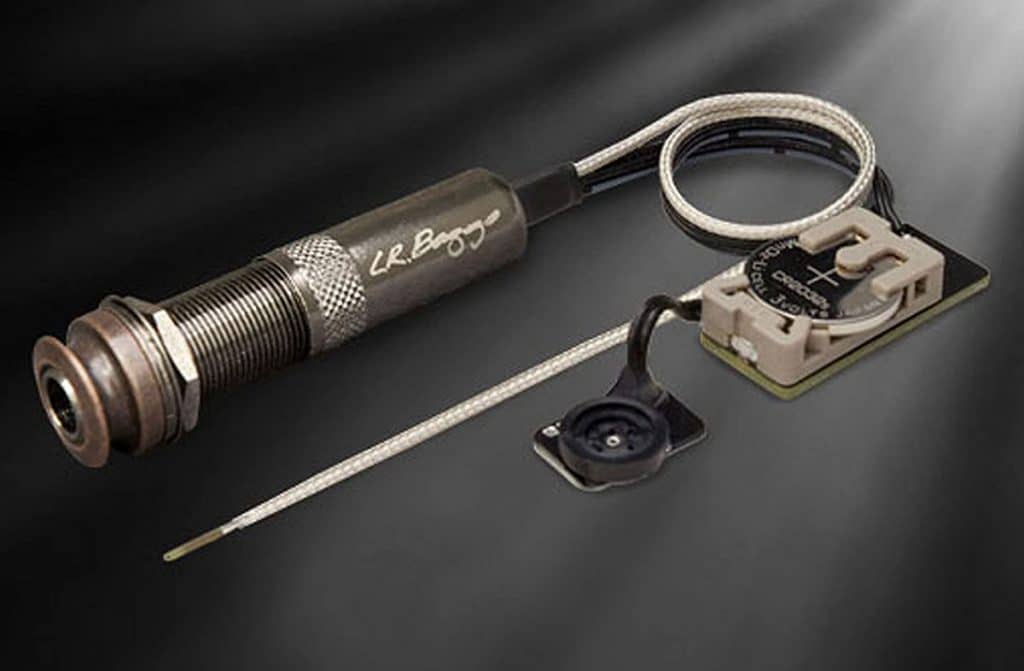
The lower number of coils on an active pickup means that they have a lower natural output (i.e. before the pre-amp), are less susceptible to background noise, and are naturally much quieter in this regard. However, the active pre-amp means that these pickups generally have a far higher output gain than passive models as well. Do remember, though, that the dynamic range will be lower. Tonally, these pickups are sometimes described as ‘sterile’ or ‘cold’.
The most popular active pickup system by far is the L.R. Baggs FIVE.O ukulele pickup with basically only positive reviews. It does come at quite a hefty price tag of around $150.
What about positioning the pickup on the ukulele?
When you’ve decided which kind of pickup technique you want to use (passive or active), you’ll also need to think about the type of pickup you want.
Soundboard Transducers (SBT) Pickups
SBT pickups are stuck onto the body of your ukulele, such as the K&K Sound Aloha Twin pickup. They can be fitted on the inside or outside. This kind of pickup picks up the vibrations coming from the strings when you pluck or strum them. Positioning is very important with these SBT sensors, so always read the manual carefully. SBT pickups allow a more natural and fuller tone than UST (read on) pickups.
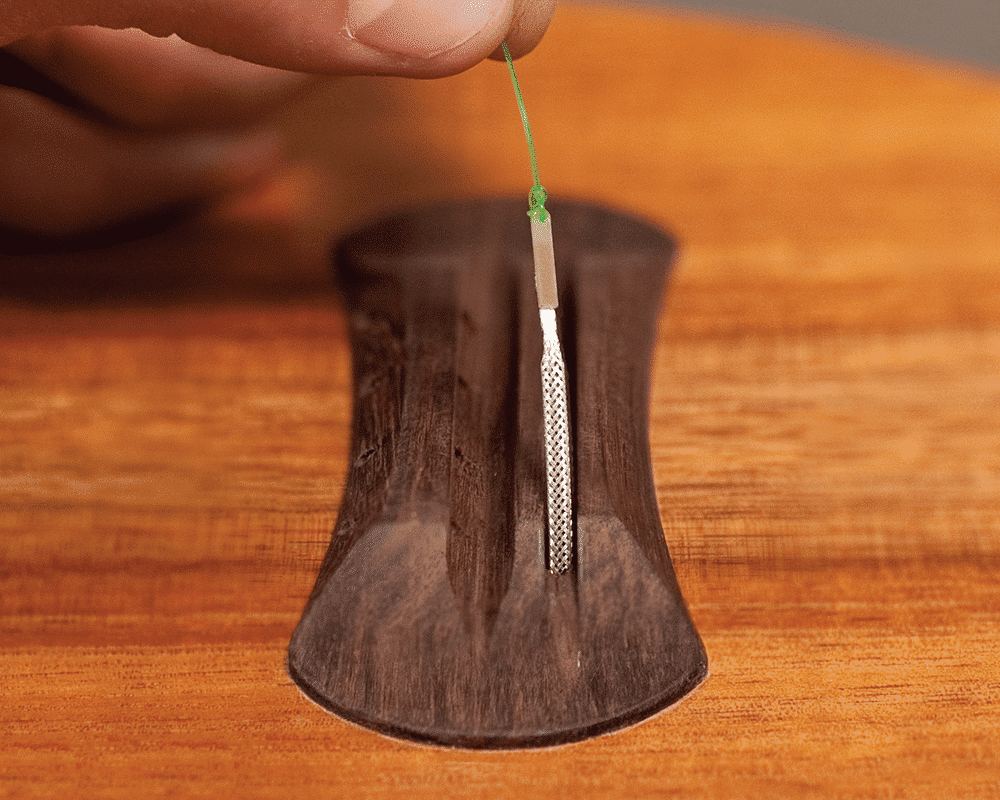
Under Saddle Transducer (UST) Pickups
UST pickups are installed in the bottom of the saddle slot in the bridge. The saddle will vibrate when you pluck or strum the strings, and these vibrations will be sent through the UST. They are more difficult to install as they require holes to be drilled for the wiring and you need a very good contact between the pickup and saddle. The very popular active pickup L.R. Baggs FIVE.O is an UST pickup and used frequently by performing ukulele players.
Saddle Block Transducer (SBT) Pickups
SBT pickups slide between the strings and the saddle and are held tightly by the strings, such as the Kremona (KNA) UK-1. This offers an easy installation and requires no modification to your ukulele at all.

Conclusion – Ukulele with a pickup
Hopefully this mini-guide to ukulele pickups has given you a headstart when researching which pickup suits you best! Active or passive? SBT, UST or SBT? All of them have a different tonality and there is no one pickup that suits everybody’s needs.
Need more input?
Feel free to contact me whenever you need more information about connecting your ukulele to a pickup.
Also interested to know more about how to read ukulele tabs?
